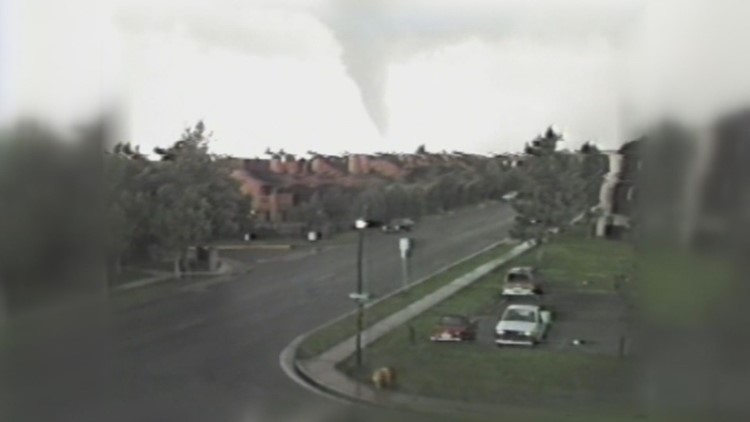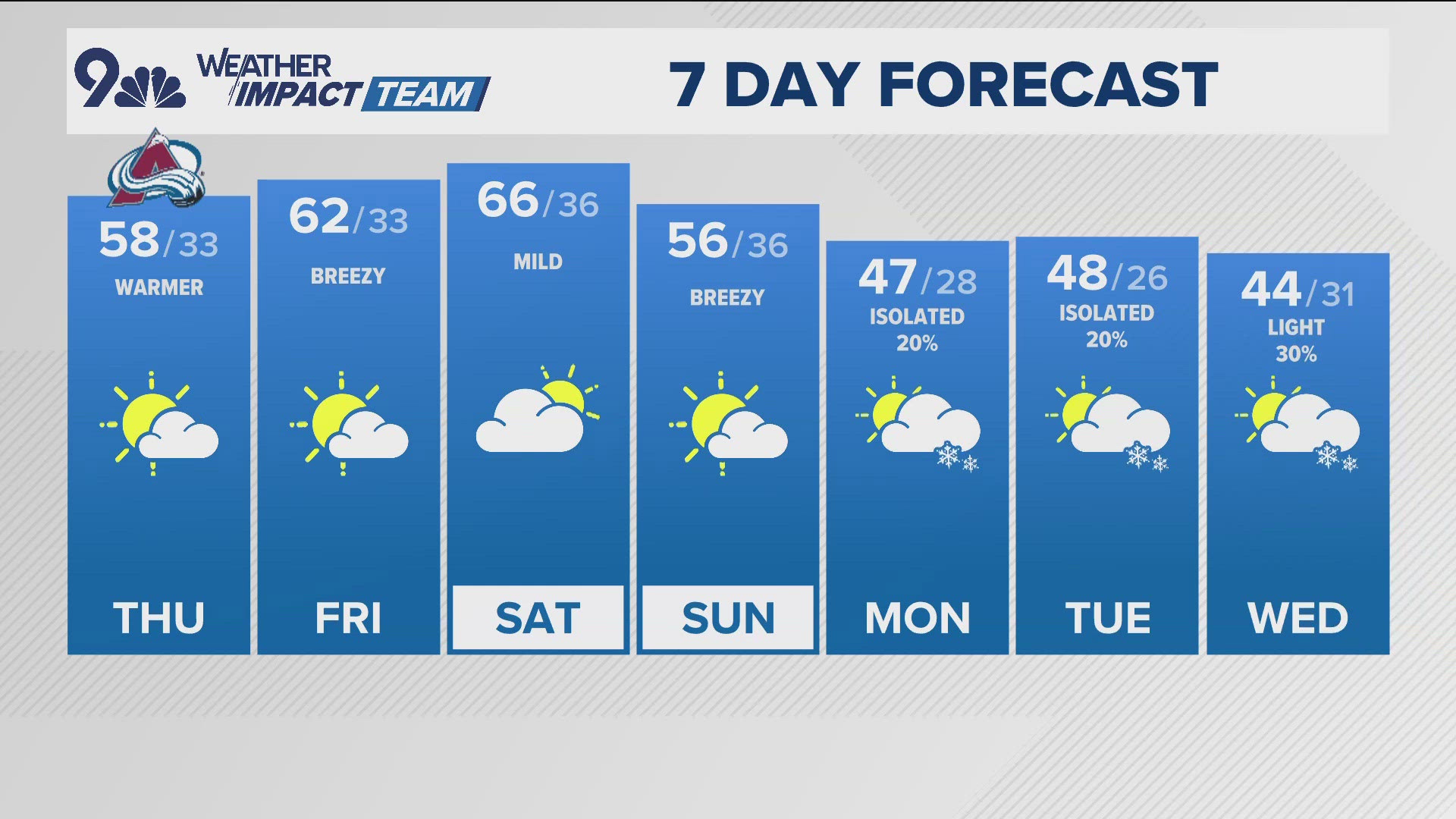Severe weather on June 15, 1988, spawned four tornadoes in the Denver metro area, causing damage to homes and businesses.
One tornado caused EF-3 damage to a furniture store at Broadway and Evans, with winds stronger than 136 mph. Officially, three other tornadoes hit the metro at the same day, and another one hit near Ft. Collins.
It was an unusual day, as tornadoes don’t strike the metro every year, but there has been at least one tornado in the city seven out of the last ten years. The last one was June, 24, 2015, causing minor EF-1 damage just east of downtown Denver.
Most metro tornadoes happen in June, but can occur anytime during in the spring, and summer.
In an average year, Colorado gets about 53 tornadoes, we’ve only had 16 this year, and 15 of those were on the same day. The last time the state saw more than 53 tornadoes was also 2015.
A map on the TornadoHistoryProject.com shows the locations of all 2112 Colorado tornadoes since 1950. Clearly, most of them are east of the mountains, although some tornadoes do happen in the high country.
There is even a Colorado "Tornado Alley".
When we get surface winds out of the southeast, leading into the Denver metro, those winds will interact with an elevated area of land between Denver and Colorado Springs, known as the Palmer Divide. As a result, favorable tornado conditions can develop quickly in that area and to the north of there. Meteorologists call it the Denver Convergence-Vorticity Zone, or DCVZ. About 60 percent of Colorado tornadoes form in that alley, which includes the east metro.
There is also weather feature called the Denver Cyclone, which often works in conjunction with the DCVZ but can also cause thunderstorms to become tornadic by itself.
The Denver metro sits down in sort of a 'land bowl', surrounded by higher terrain on all sides. Some studies show that south and south-easterly winds can get inside that bowl and start a clockwise or anti-cycloninc circulation. This pulls dry air off the mountains, that collides with the warm moist air coming up from the south.
Most Colorado tornadoes are weaker, and shorter-lived, compared to the violent tornadoes in the southern and central plains, but can cause great damage, and even death or injuries if you are not prepared.
- Get the forecast and have a plan: The National Weather Service and 9NEWS meteorologists will typically let you know when thunderstorms are likely, 24 to 36 hours in advance. You should discuss your severe weather plan with your family, or your co-workers.
- Tornado Watches and Warnings: A Tornado Watch will be issued by the Storm Prediction Center as tornado conditions start to develop, usually several hours in advance. A Tornado Watch means that conditions are favorable for tornado development.
A Tornado Warning is issued by your local National Weather Service office when a thunderstorm is developing a tornado, a funnel cloud is spotted, or a tornado is spotted.
If you are in a Tornado Warned area, you should start the tornado precautions that you should have previously planned.
Large violent supercell tornadoes can normally be detected with doppler radar before they ever touch down on the ground, and the NWS will issue a Tornado Warning based on radar.
Smaller tornadoes, like landspouts, do not always have defined radar signatures, so spotter reports are very important in these situations, and the lead time for warnings is much shorter. Many thunderstorms in Colorado will go straight to a Tornado Warning, without ever getting a Severe Thunderstorm Warning.
-Tornado Plan at Home: Your basement or a tornado shelter is the safest place to go when there is a tornado coming toward your house. Even in your basement, you should stay away from windows, and cover head and body in case of debris.
If you do not have a basement, you should go to the lowest level of your home, to a room that does not have windows, usually a bathroom or a closet. Protect your head and body from debris. A bathroom without windows is usually the safest place in a home without a basement. The pipes can add additional integrity to the walls. I have seen many EF-3 tornadoes where the bathroom is the only room with all four walls still standing. You can pull a mattress or something into the room to cover up with.
-Tornado Plan in a Vehicle: A vehicle is not a safe place to be in a tornado. Even a small tornado can roll a vehicle over or pick it up a slam it to the ground. If you see a tornado approaching your vehicle, you should abandon the vehicle and seek the lowest ground possible, like a ditch. Get low and cover your head. If you believe you have time when I Tornado Warning is issued, leave your vehicle and get inside a sturdy building, like a house or a store.
-Tornado Plan in a Mobile Home: A mobile home or trailer is not a safe place during a tornado. If you live in a mobile home, you should have a plan to not be there on days when thunderstorms are expected.
- Tornado Plan in Highrise Buildings: The lowest level of the building, away from windows will be the safest place during a tornado. If you can't get to the lowest floor, the most interior part of the building, likely a hallway would be the next best place. Stay away from windows, and stay out of elevators.
-Tornado Plan at Work, School, or Airport: The administrators of these places should have a tornado plan in place. You should discuss this tornado plan with your supervisors, teachers, or principals. The Denver International Airport has a tornado protocol that they normally have to implement several times a year. If you are traveling on a day that thunderstorms are expected, you can learn more from airport information desks.



